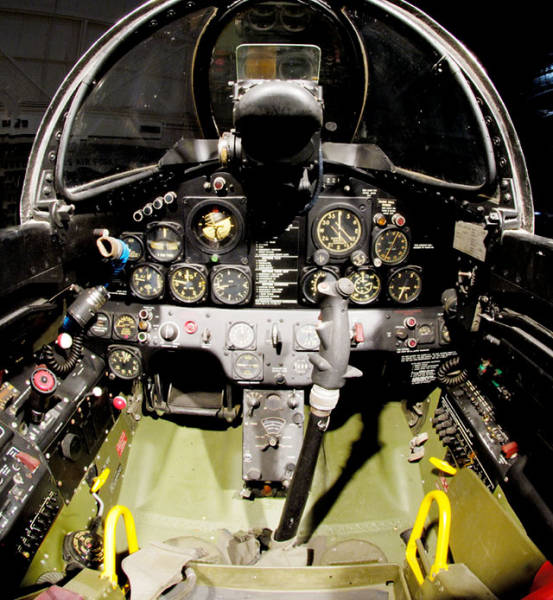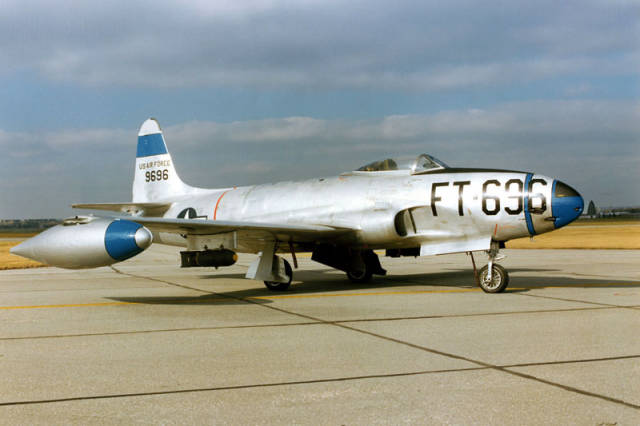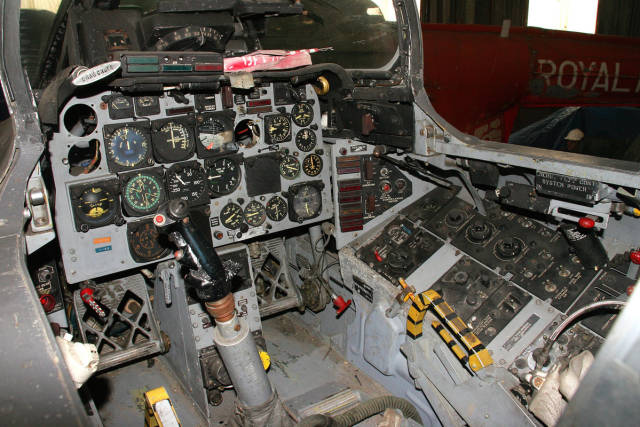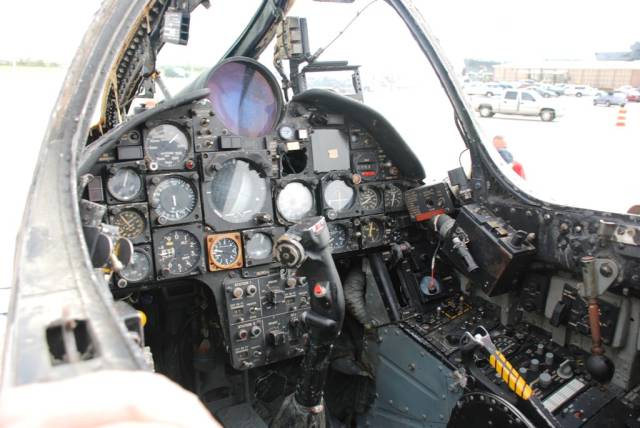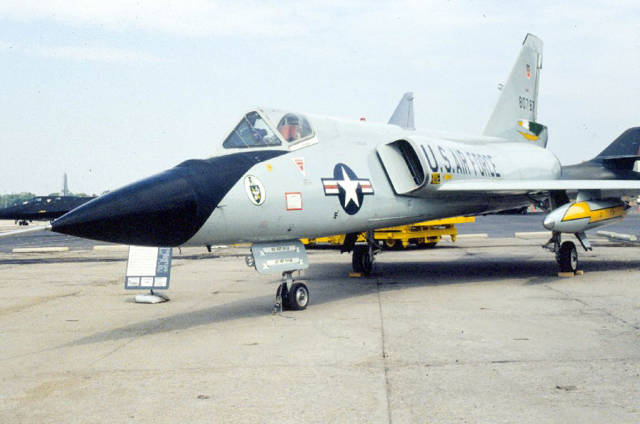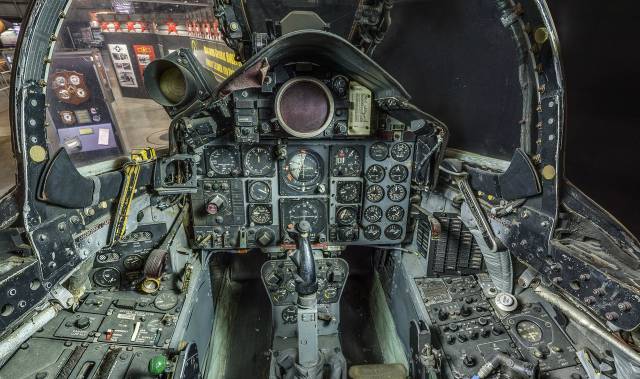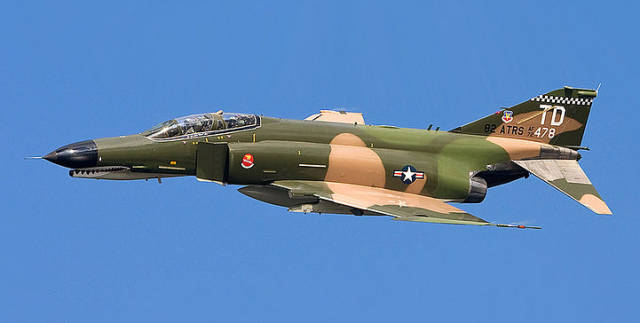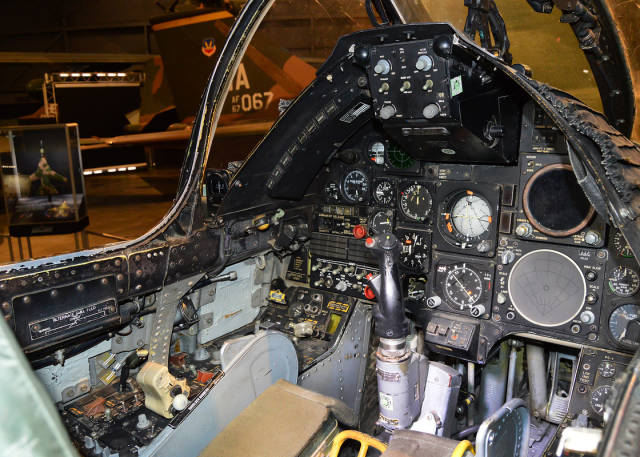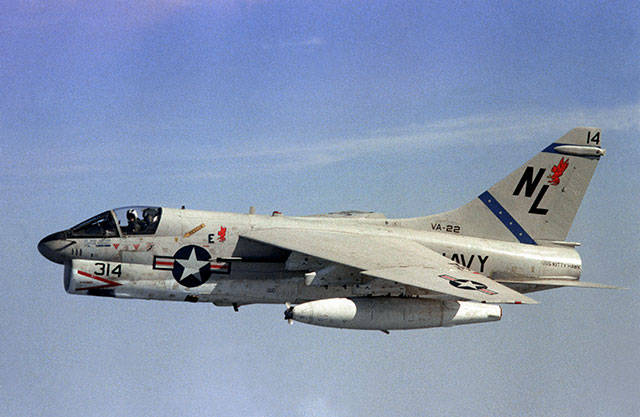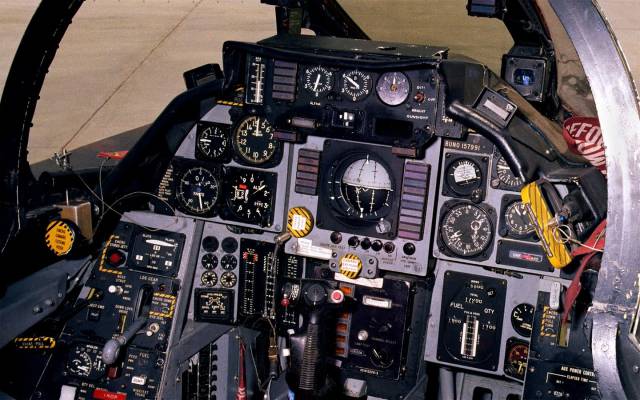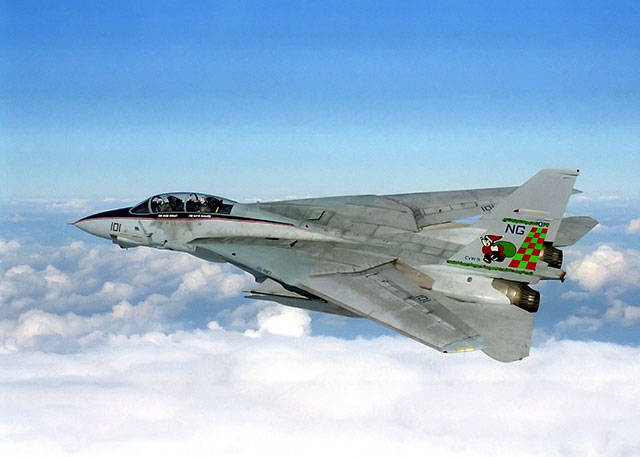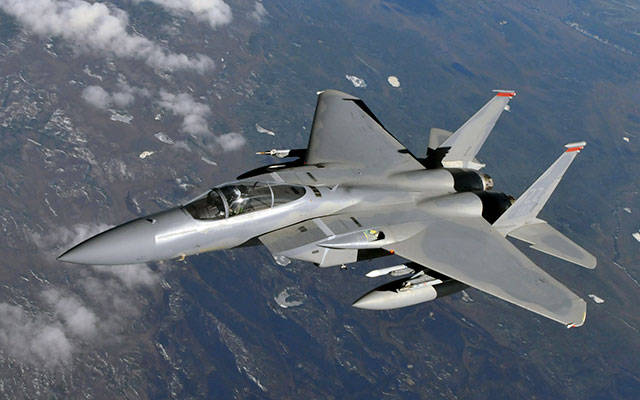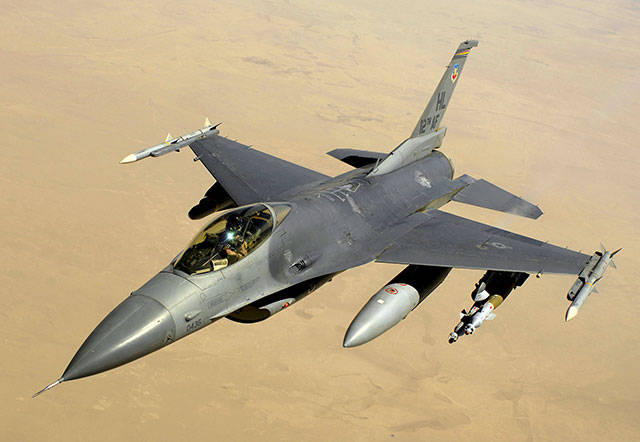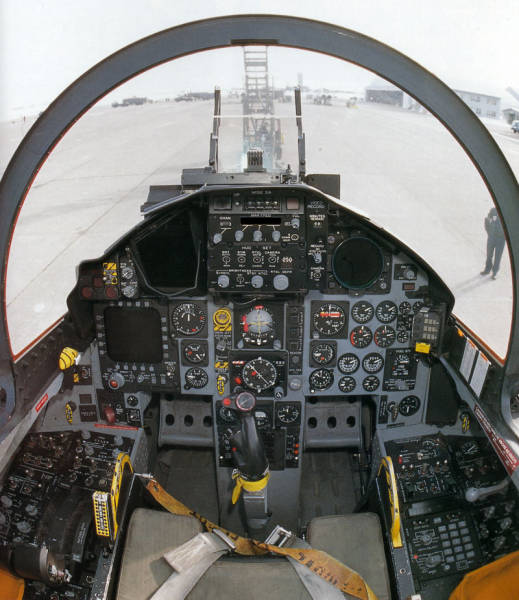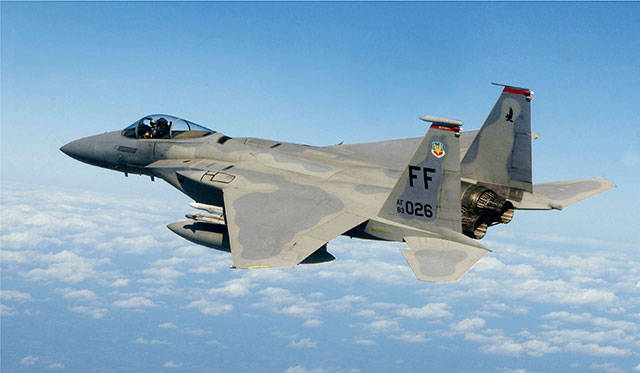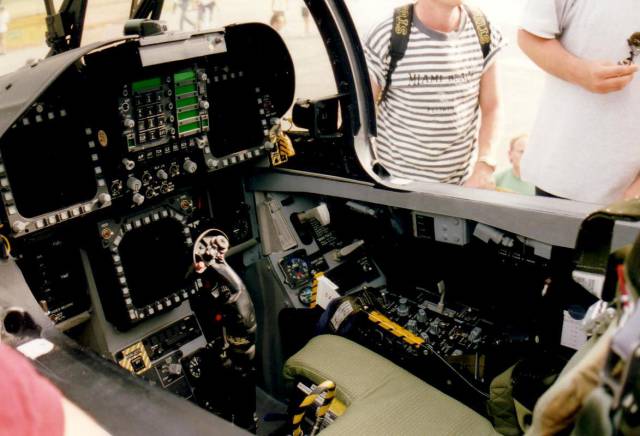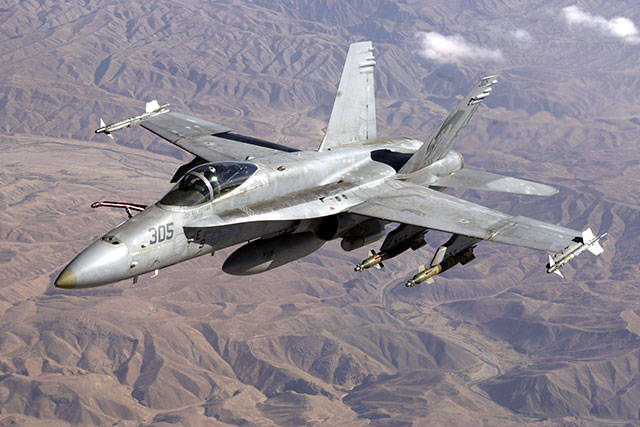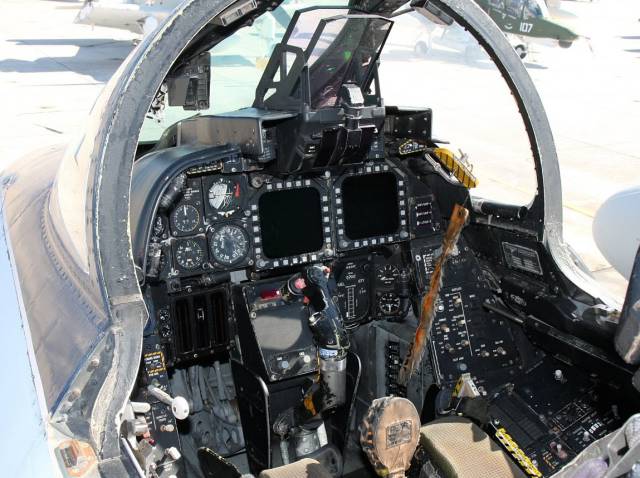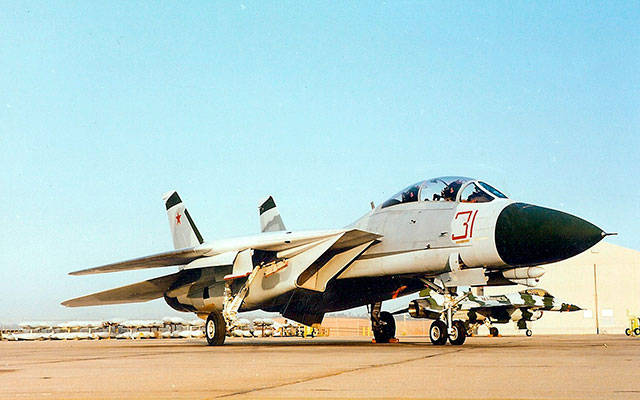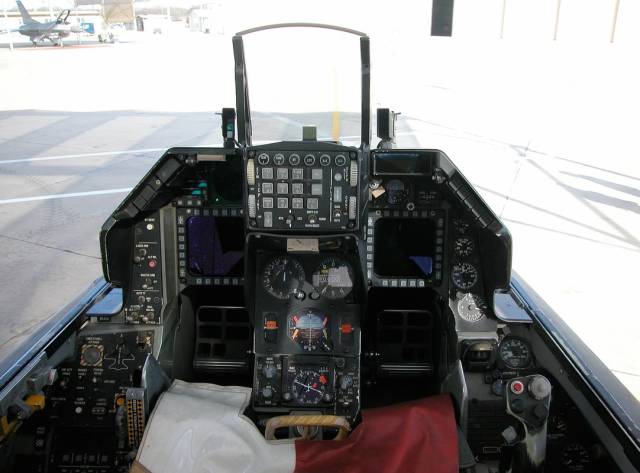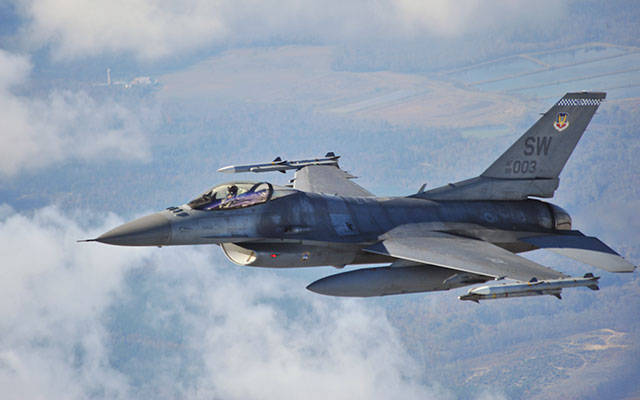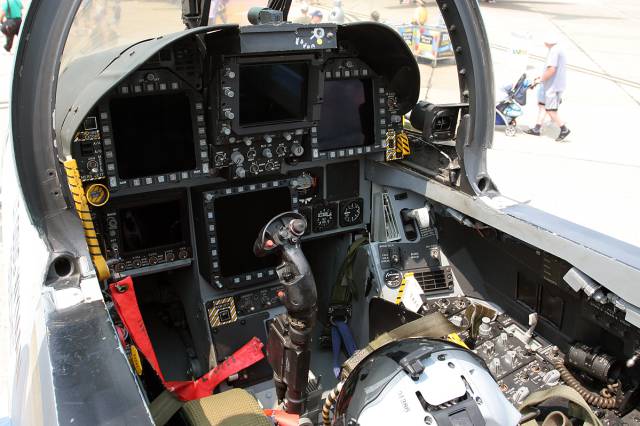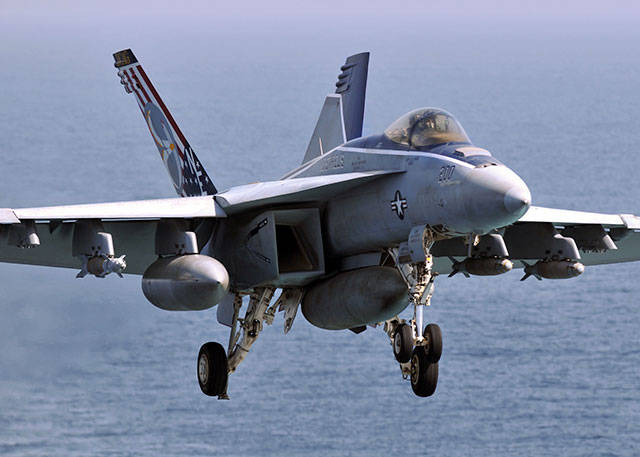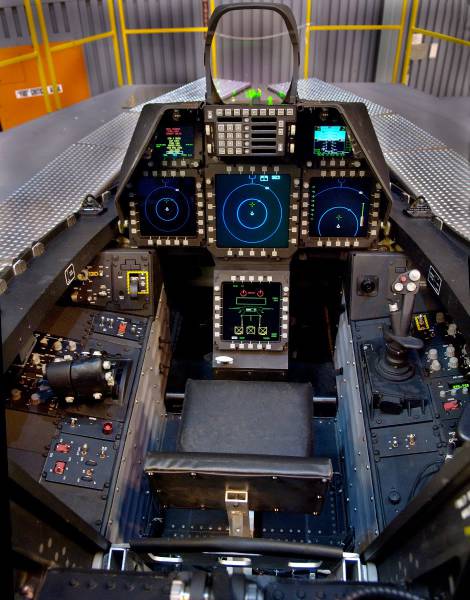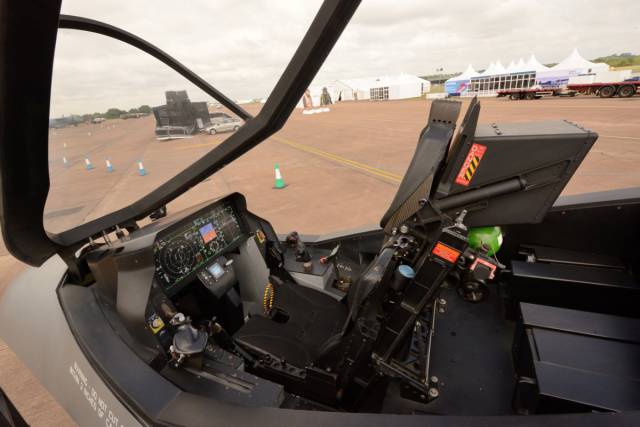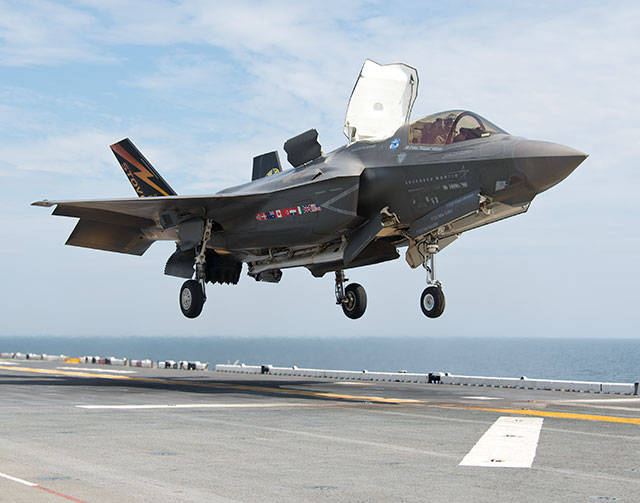Lockheed P-80A Shooting Star (1945)
The first jet fighter to go into service with the United States, this first generation jet fighter took lessons learned from fighter planes in WW2 and incorporated them into a basic cockpit design.
North American F-100D Super Sabre (1956)
This second generation jet fighter, the first USAF fighter capable of supersonic level flight, was primarily armed with guns. It was one of the first fighters to be outfitted with air to air missiles and became outfitted with systems to give the pilot notice when a missile was locked on.
Vought F-8 Crusader (1958)
The last American fighter built with guns as its primary weapon, we begin to see third generation characteristics incorporated including the outfitting of fighters with radar and the corresponding radar scope.
Convair F-106 Delta Dart (1959)
The futuristic supersonic interceptor featured many new innovations for a fighter jet. Including the radar probe in the cockpit, there were new avionics available for it such as ground-controlled autopilot and a Tactical Situation Display (TSD) map for the pilot.
McDonnell Douglas F-4 Phantom II (1964)
The classic third-generation fighter, used by the Air Force, Navy, and Marines, had two crewmembers. The backseater, the Radar Intercept Officer (RIO), managed the new and advanced radar system. Designed to carry only missiles as its armament, later versions incorporated a gun form lessons learned in Vietnam. The F-4 is still in service with various countries around the world, and is one of the most produced fighter jets of all time.
Vought A-7D Corsair II (1973)
The light attack aircraft based on the F-8 Crusader was one of the first combat aircraft to feature a Heads up Display (HUD), Inertial Navigation System (INS), and turbofan engine. Note the addition of radar scopes and various avionics advances for the single-seat attack aircraft.
Grumman F-14A Tomcat (1974)
One of the first fourth-generation fighter jets to come into service, the F-14A was similar to the F-4 in that it required two crewmembers, with the backseater being the Radar Intercept Officer in charge of the plane’s advanced radar system. Increasingly, flight instrumentation would be moved to the aircraft’s Heads Up Display (HUD).
McDonnell Douglas F-15A Eagle (1976)
The famous fourth-generation air superiority fighter still primarily relied upon analog instruments, but that was changing as you can see it to start incorporating more digital systems for the pilot. The radar system was quite advanced for the day, especially for a single-seat fighter jet.
General Dynamics F-16A Fighting Falcon (1982)
The F-16A Fighting Falcon, known by pilots as the Viper, was designed in the 70s and incorporated many revolutionary features. The control stick was moved from the center to the right side of the cockpit. The seat was reclined 30 degrees to help the pilot sustain high G forces. The plane was the first to use fly-by-wire in an operational military aircraft. Most notably, the cockpit begins to use the digital “glass” cockpit configuration in which analog instruments get replaced with large multi-function screens that provide flight instrumentation and other operational information.
McDonnell Douglas F-15C Eagle (1985)
The upgrades to the F-15 resulted in the F-15C variant, which includes more advanced avionics and a move towards more digital glass cockpit instrumentation for the pilot.
McDonnell Douglass F/A-18C Hornet (1987)
The move to digital flight instrumentation is clear with the F/A-18C Hornet. The light strike fighter’s multi-function displays (MFDs) allow the pilot to switch the screens between different systems in the plane and allow it to drop increasingly sophisticated ordnance in both air-to-air and air-to-ground engagements.
McDonnell Douglass F-15E Strike Eagle (1988)
The difference in cockpits between the F-15E Strike Eagle, an all-weather interdictor for the Air Force, and the older F-15A and F-15C Eagle air superiority fighters is obvious.
Grumman F-14D Super Tomcat (1991)
The F-14D Super Tomcat was designed to bring the F-14 Tomcat into the digital era, and included new digital MFDs for the pilot and RIO.
General Dynamics F-16C Fighting Falcon (1991)
The move towards glass cockpits is readily apparent with the F-16C version of the Viper.
Boeing F/A-18E Super Hornet (1999)
The Super Hornet uses its HUD as its primary flight instrument with the other MFDs in place to monitor and run the numerous features and weapons systems on the plane.
Lockheed Martin F-22A Raptor (2007)
Designed in the late 80s and first flown in the 90s, the F-22A Raptor is the world’s first and currently only operational fifth-generation fighter. The move to the digital age is obvious with the entire cockpit now utilizing big digital displays. Note that this is a pic of the cockpit trainer of the F-22, as actual cockpit pictures of the F-22 are understandably hard to find.
Lockheed Martin F-35A Lightning II (2015)
The JSF features the most revolutionary cockpit design yet, with a giant multi-function touch screen display. Notice the lack of a HUD – the pilot’s helmet now projects flight information to the pilot no matter which direction the pilot looks.

